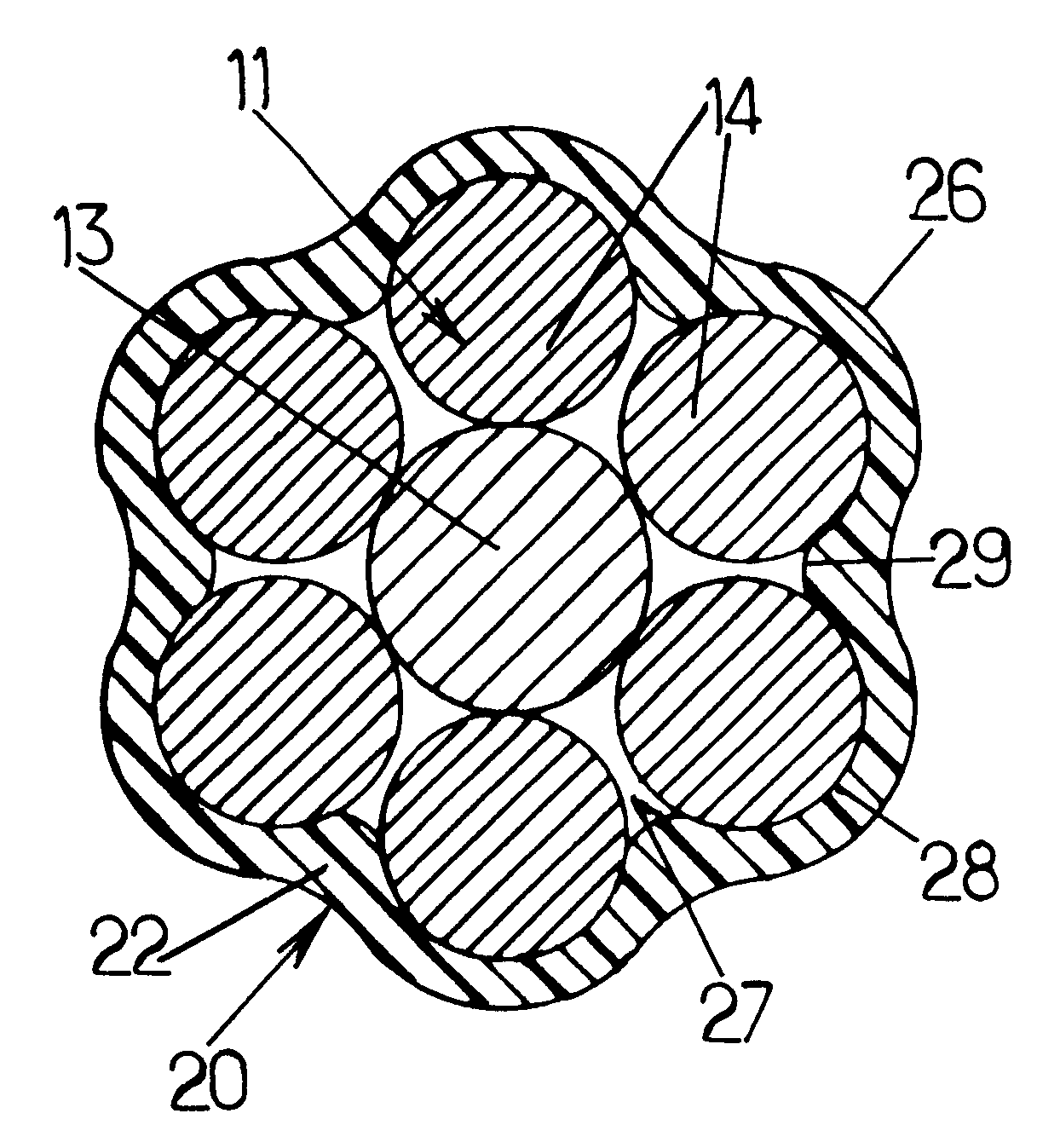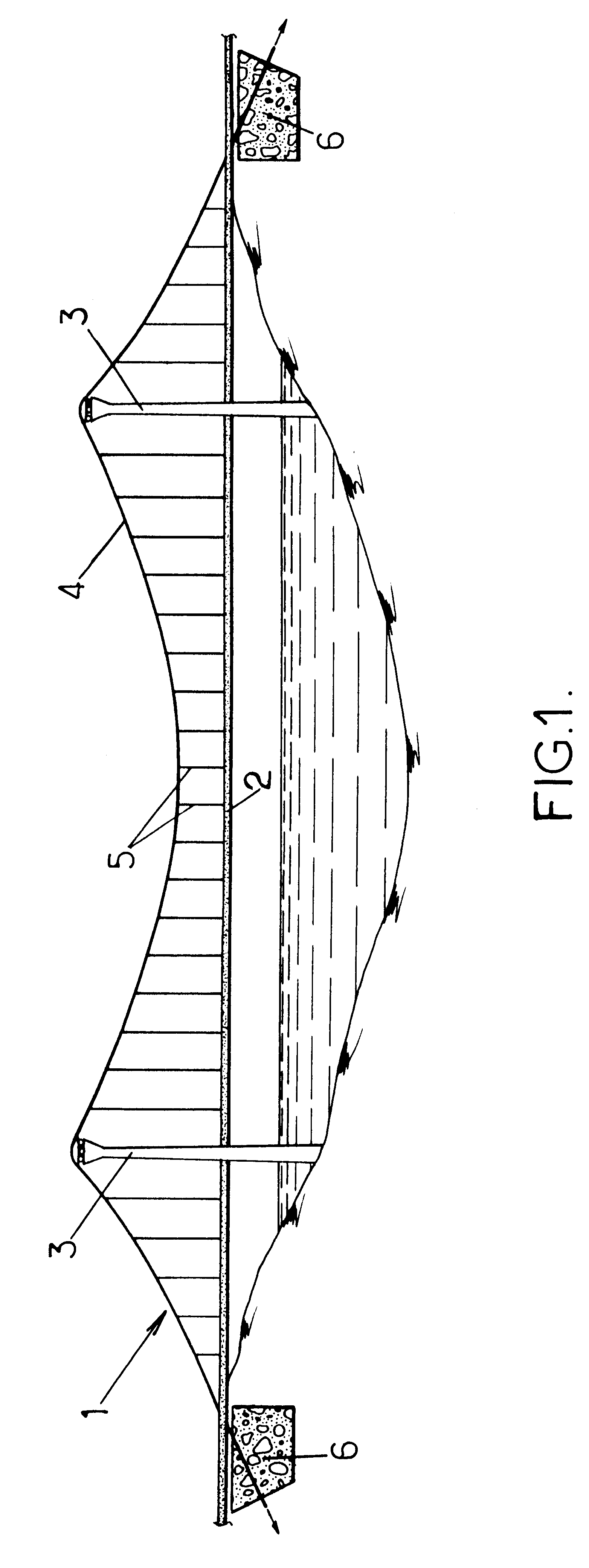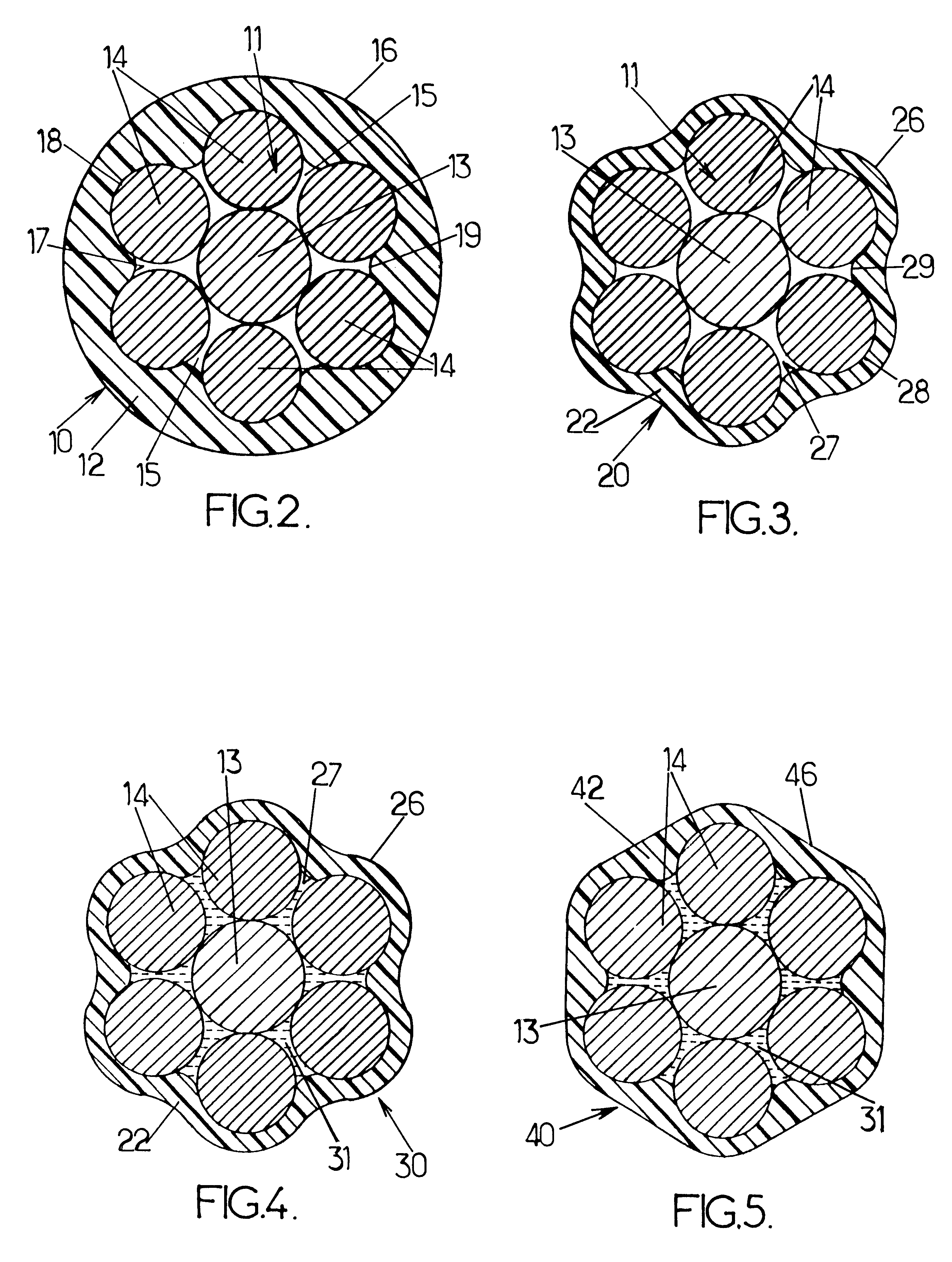Cable with parallel wires for building work structure, anchoring for said cable, and anchoring method
a technology of building work structure and parallel wires, which is applied in the direction of cable-stayed bridges, bridges, transportation and packaging, etc., can solve the problems of differential elongation between the central wire and the peripheral wires, the fatigue behavior of the strand as defined hereinabove is not as good as that of the wire, and the production of twisted strands or twists requires a special twisting operation,
- Summary
- Abstract
- Description
- Claims
- Application Information
AI Technical Summary
Benefits of technology
Problems solved by technology
Method used
Image
Examples
first embodiment
Each suspension cable 3 consists of one or more reinforcements 10 according to the invention, like the one depicted in FIG. 2.
Each reinforcement 10 consists of a collection of solid wires 11 which form a bundle enveloped in a sheath 12. The reinforcement 10 thus formed is also known as a strand, and may be combined with other strands to form the cable 4. It is thus understood that the term "reinforcement" denotes a flexible assembly which can be wound so that it can be stored and transported, and is then unwound to be installed in a building work.
Within a strand, the wires 11 are generally seven in number and comprise a central wire 13 around which six peripheral wires 14 are arranged. The wires 13 and 14 run parallel to each other and are, for example, made of steel.
The wires 13 and 14 are in mutual contact along their generatrix. Only the central wire 13 is in contact with all the other peripheral wires 14. The peripheral wires 14 are separated one from the next and delimit groove...
second embodiment
In a second embodiment, like the one depicted in FIG. 3, the reinforcement 20 can be distinguished from the reinforcement 10 only by the shape of the exterior wall of the sheath or sheath 22. This sheath has an exterior wall 26 and an interior wall 27 which, in cross section, are both of lobed shape.
The interior wall 27 is similar to the interior wall 17 of the sheath 12 of the first embodiment and has recesses 28 and projections 29. The exterior wall 26 has recesses and projections which correspond respectively with the projections and the recesses of the interior wall 27.
third embodiment
The reinforcement 30 of the third embodiment depicted in FIG. 4 differs from the reinforcement 20 previously described only in that the wires 13 and 14 are embedded in an elastomer matrix 31 such as polybutadiene or the like. This matrix occupies the gaps between the wires 13, 14. The elastomer 31 adheres to the wires, by surface adhesion, preferably, by chemical bonding with the sheath 22 in order to increase this adhesion. As an alternative, the matrix may be a lubricant such as wax or grease so as to reduce the friction between the wires and the sheath.
PUM
| Property | Measurement | Unit |
|---|---|---|
| temperature | aaaaa | aaaaa |
| flexible | aaaaa | aaaaa |
| circular shape | aaaaa | aaaaa |
Abstract
Description
Claims
Application Information
 Login to View More
Login to View More - R&D
- Intellectual Property
- Life Sciences
- Materials
- Tech Scout
- Unparalleled Data Quality
- Higher Quality Content
- 60% Fewer Hallucinations
Browse by: Latest US Patents, China's latest patents, Technical Efficacy Thesaurus, Application Domain, Technology Topic, Popular Technical Reports.
© 2025 PatSnap. All rights reserved.Legal|Privacy policy|Modern Slavery Act Transparency Statement|Sitemap|About US| Contact US: help@patsnap.com



